Abstract
1. The rate of oxygen consumption was measured in young pigs exposed to different ambient temperatures and the effect on metabolic rate of changing the temperature of thermodes implanted in the hypothalamus and over the spinal cord was determined. In some experiments the temperature of the skin over the trunk was changed by means of a water-perfused coat.
2. Cooling the hypothalamus or the spinal cord in a warm ambient did not change the rate of oxygen consumption. At a thermoneutral ambient temperature, cooling either thermode increased oxygen consumption. In a cold environment, cooling either thermode increased the rate of oxygen consumption more than at a thermoneutral temperature. The increase in the rate of oxygen consumption was greatest during cooling of the spinal cord and it appeared that the pigs also shivered more violently. Heating either thermode tended to decrease oxygen consumption in a cold environment.
3. In pigs with thermodes both in the hypothalamus and over the spinal cord, cooling both thermodes was accompanied by a greater increase in oxygen consumption than cooling either thermode alone. The increase in oxygen consumption on cooling one thermode could be reduced by heating the other.
4. The skin temperature (fixed by the water perfused coat, or the ambient temperature) at which the rate of oxygen consumption increased, was lowered during heating of the thermodes, but the rate of increase in oxygen consumption appeared not to change as a function of falling skin or ambient temperature.
Full text
PDF
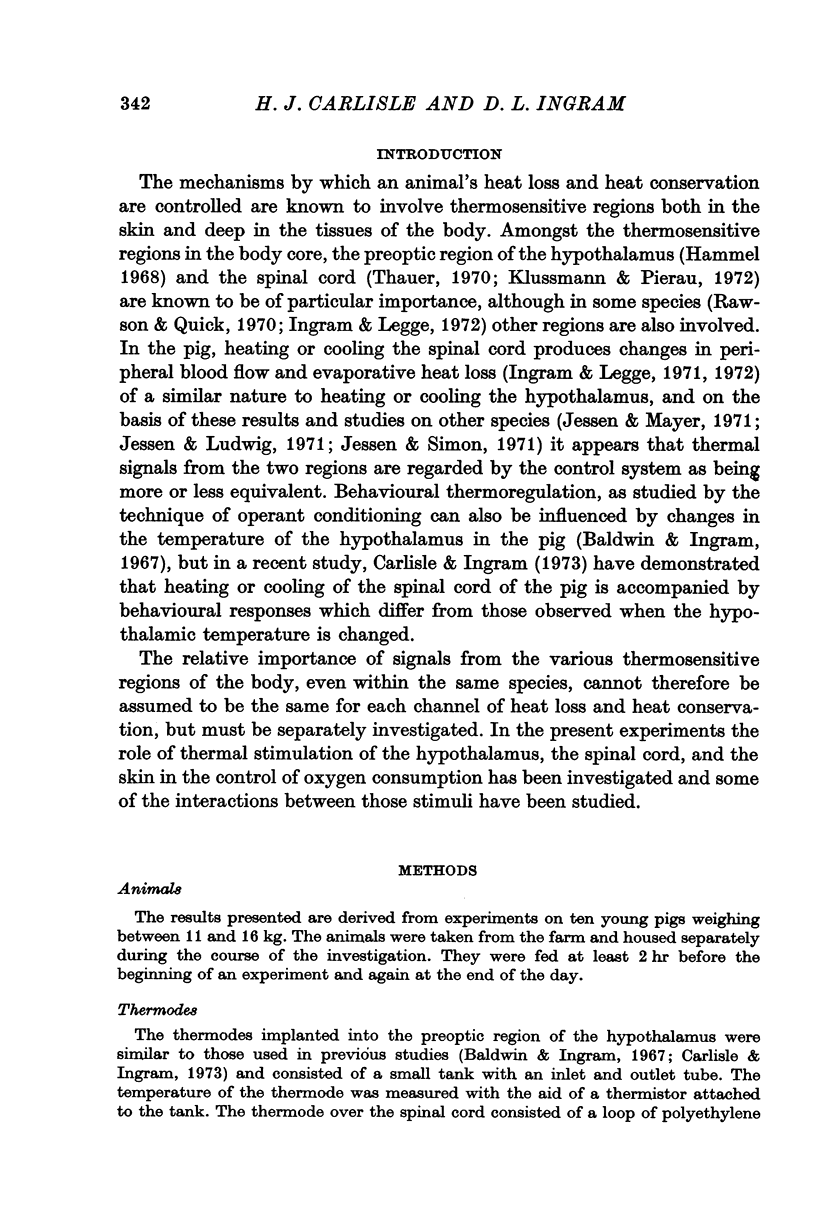
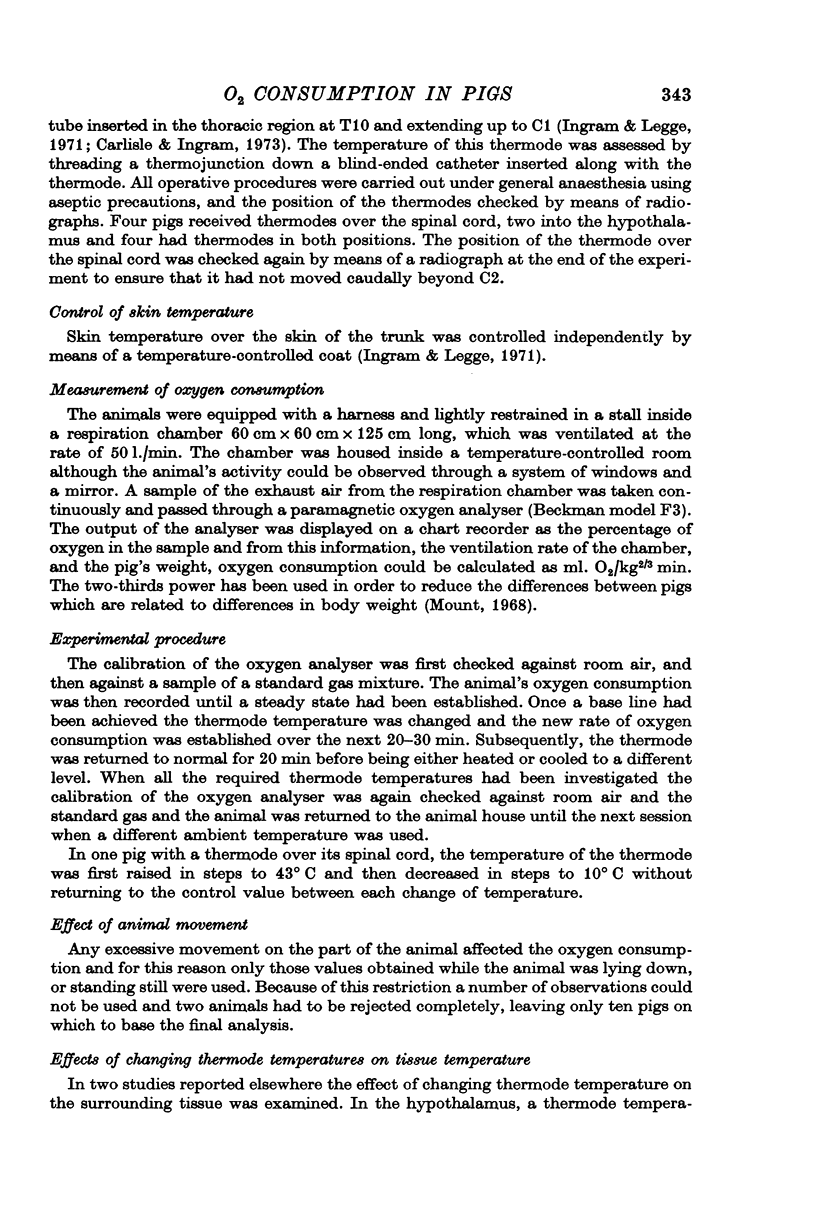
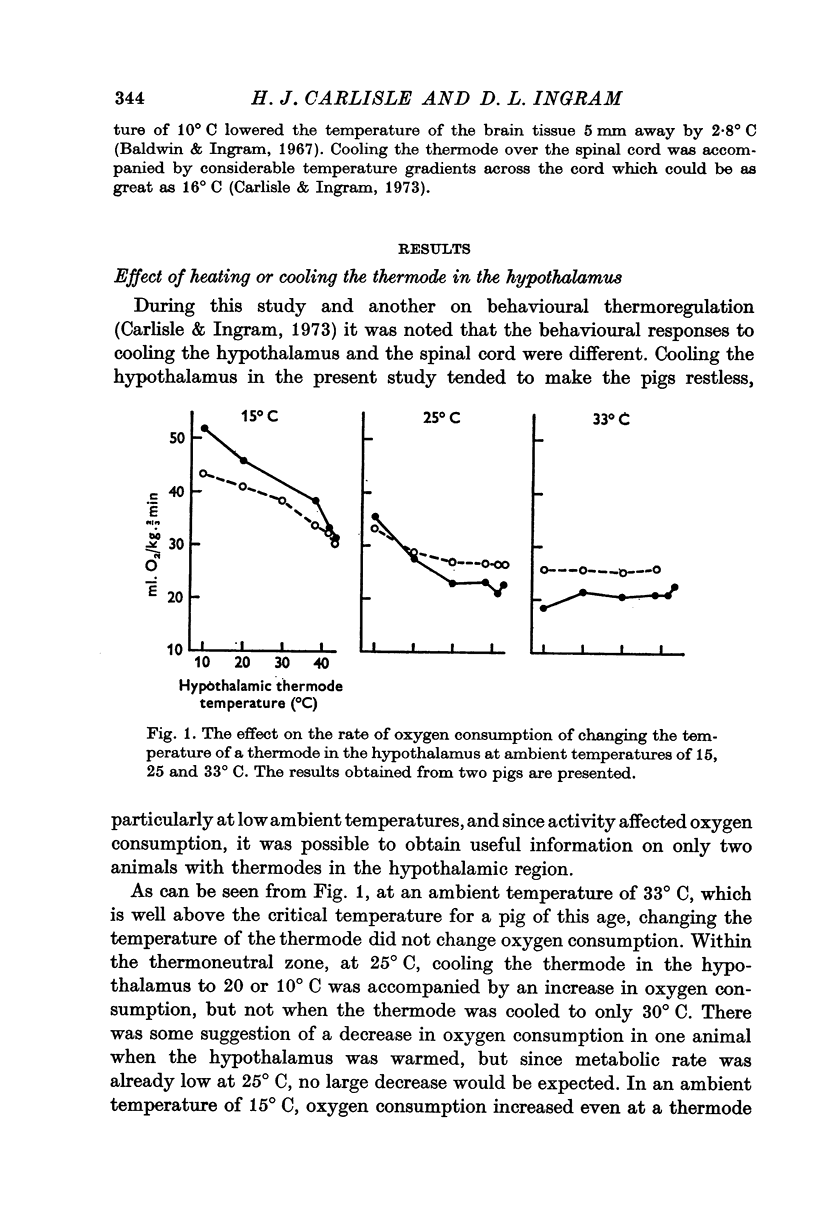
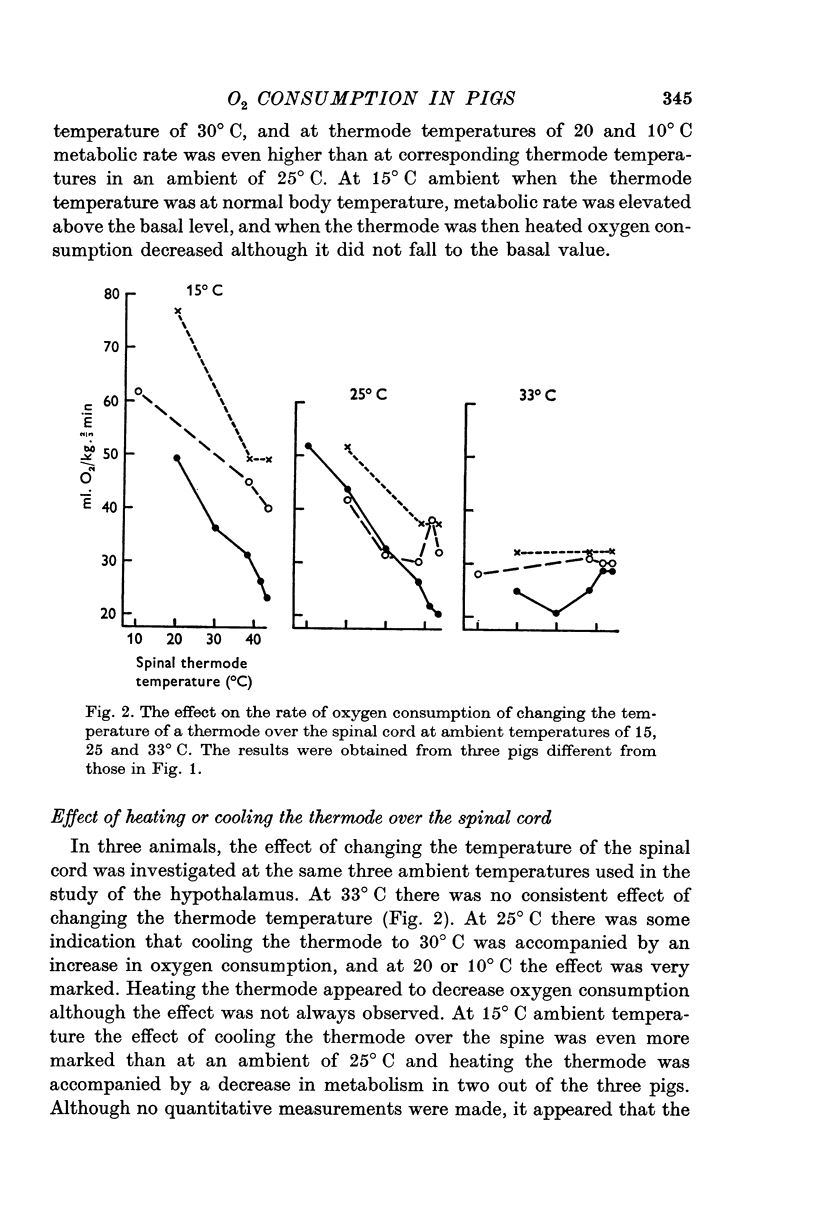
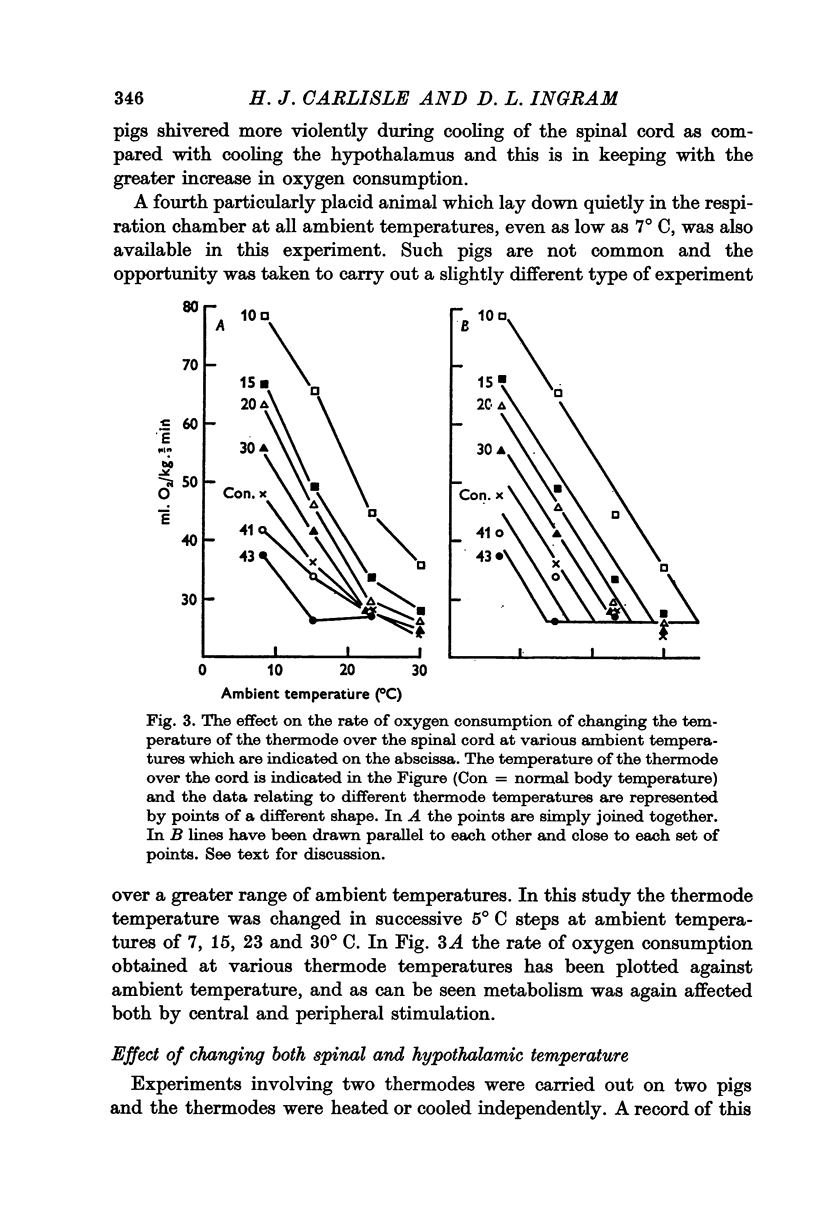
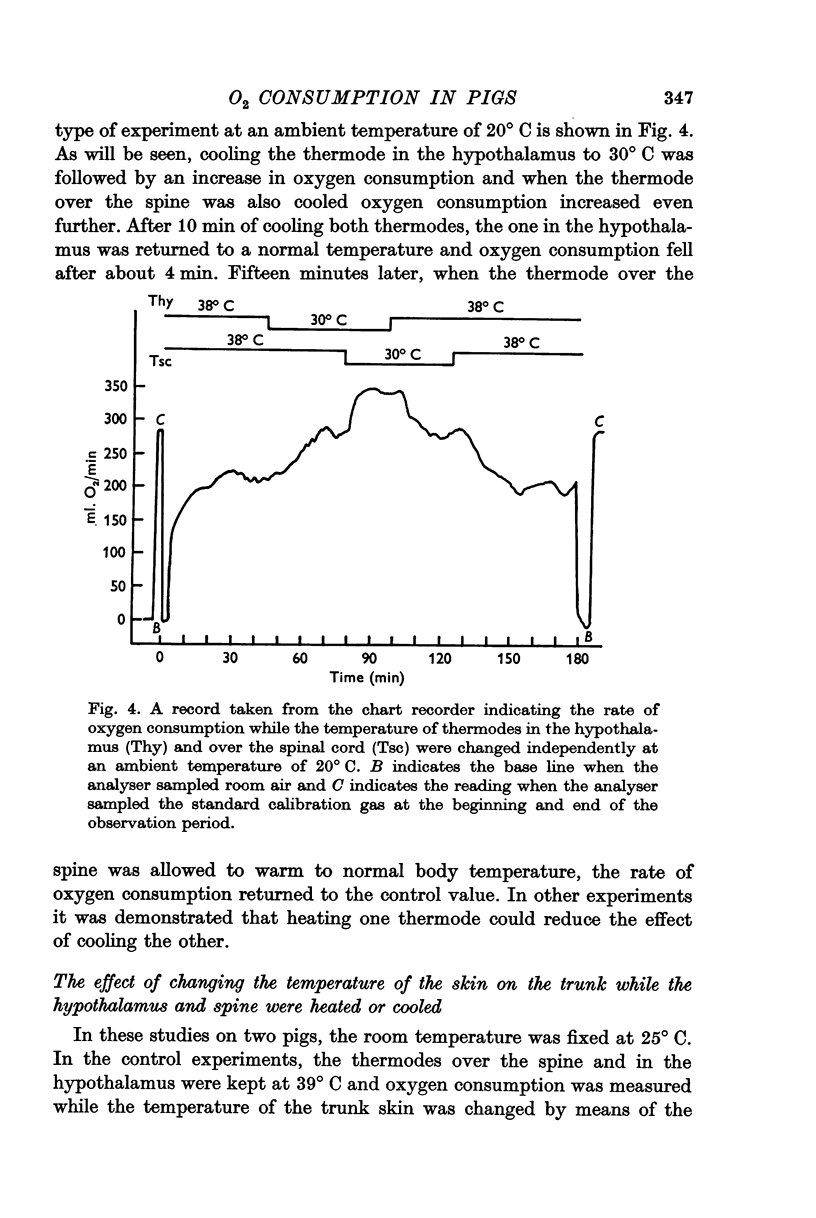
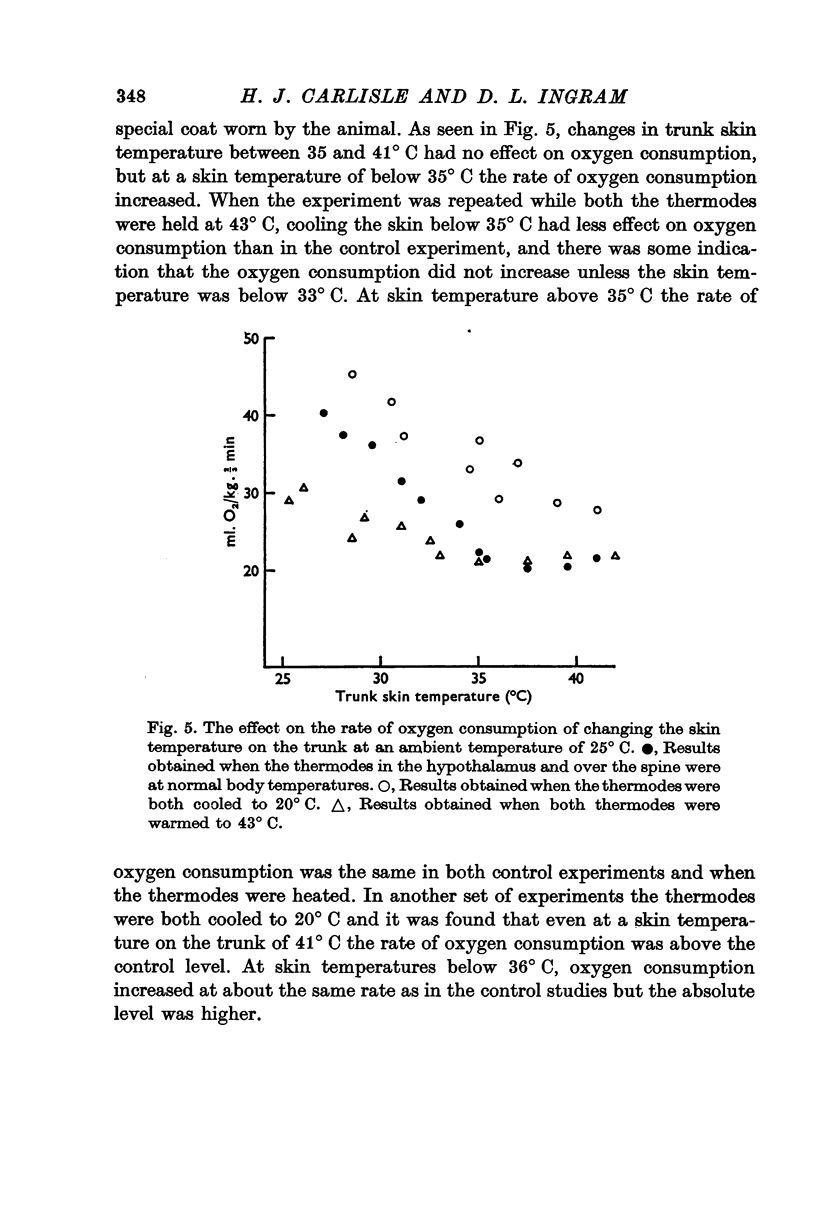
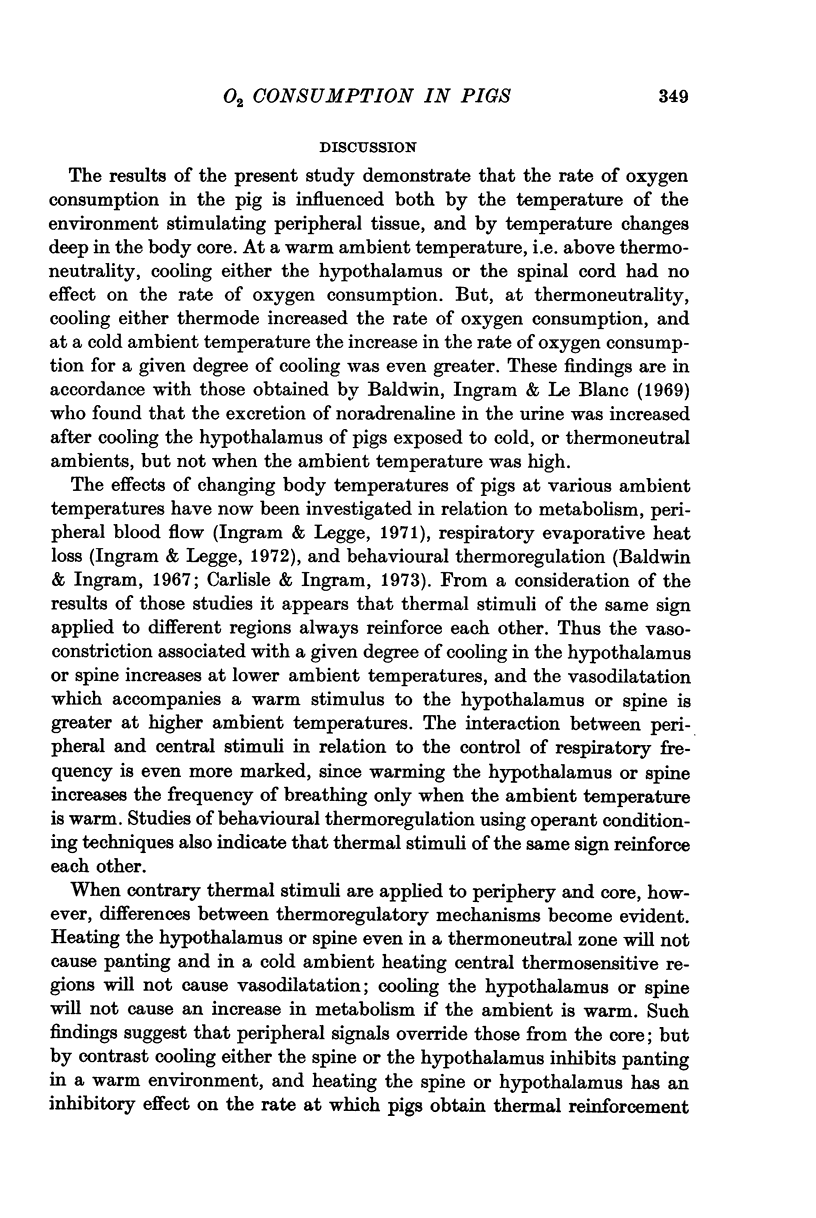
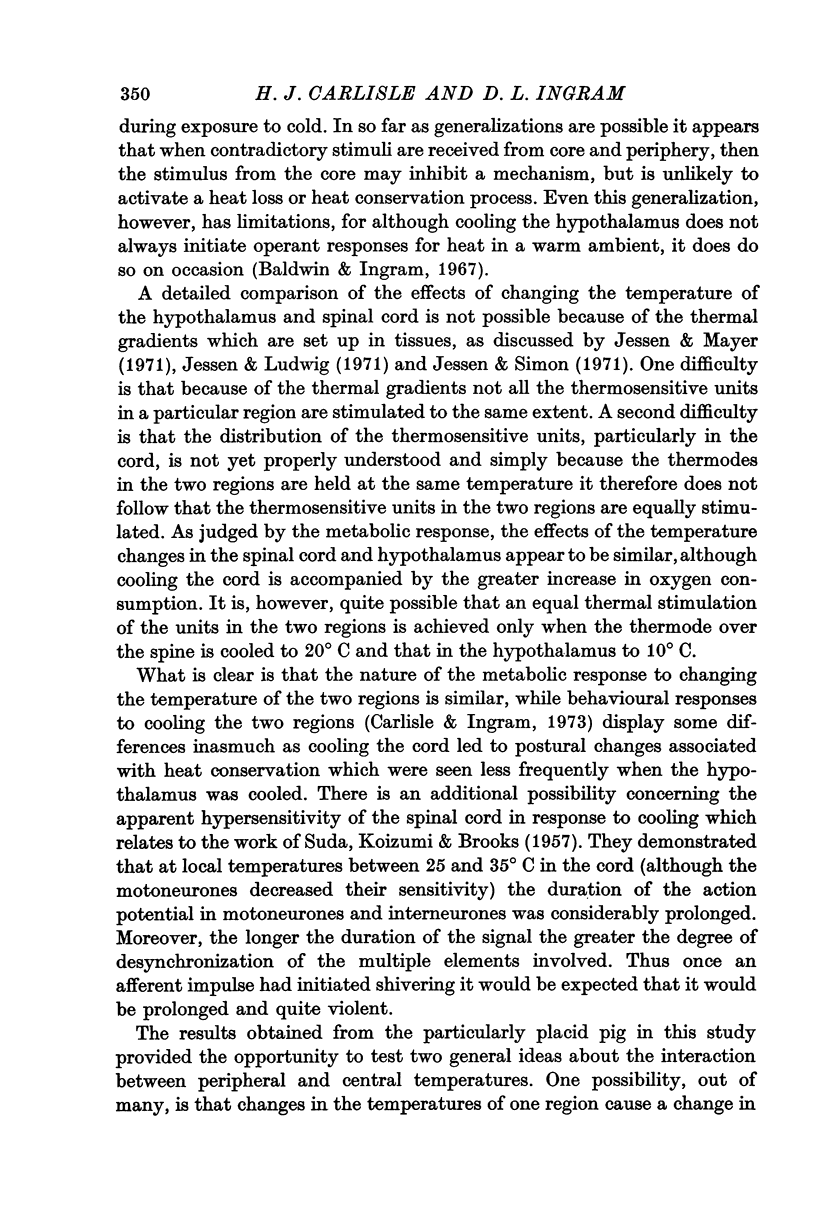
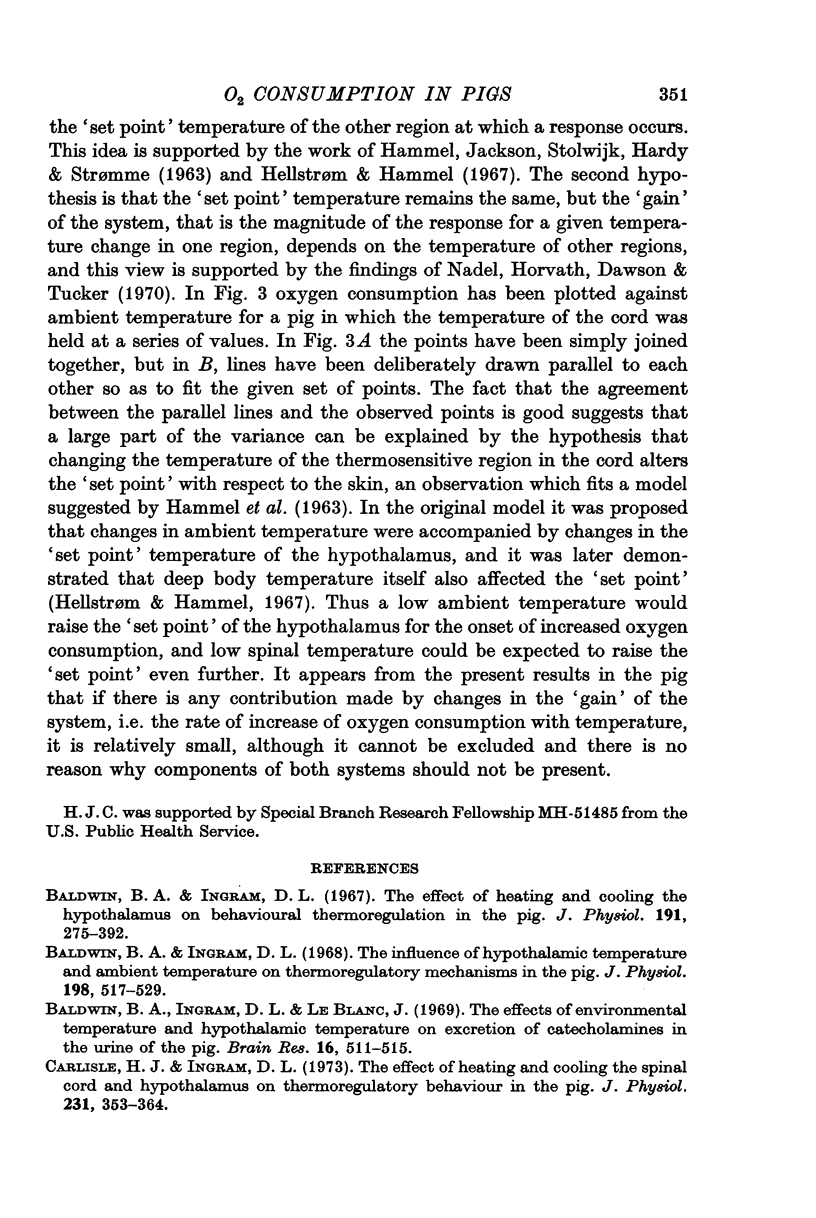
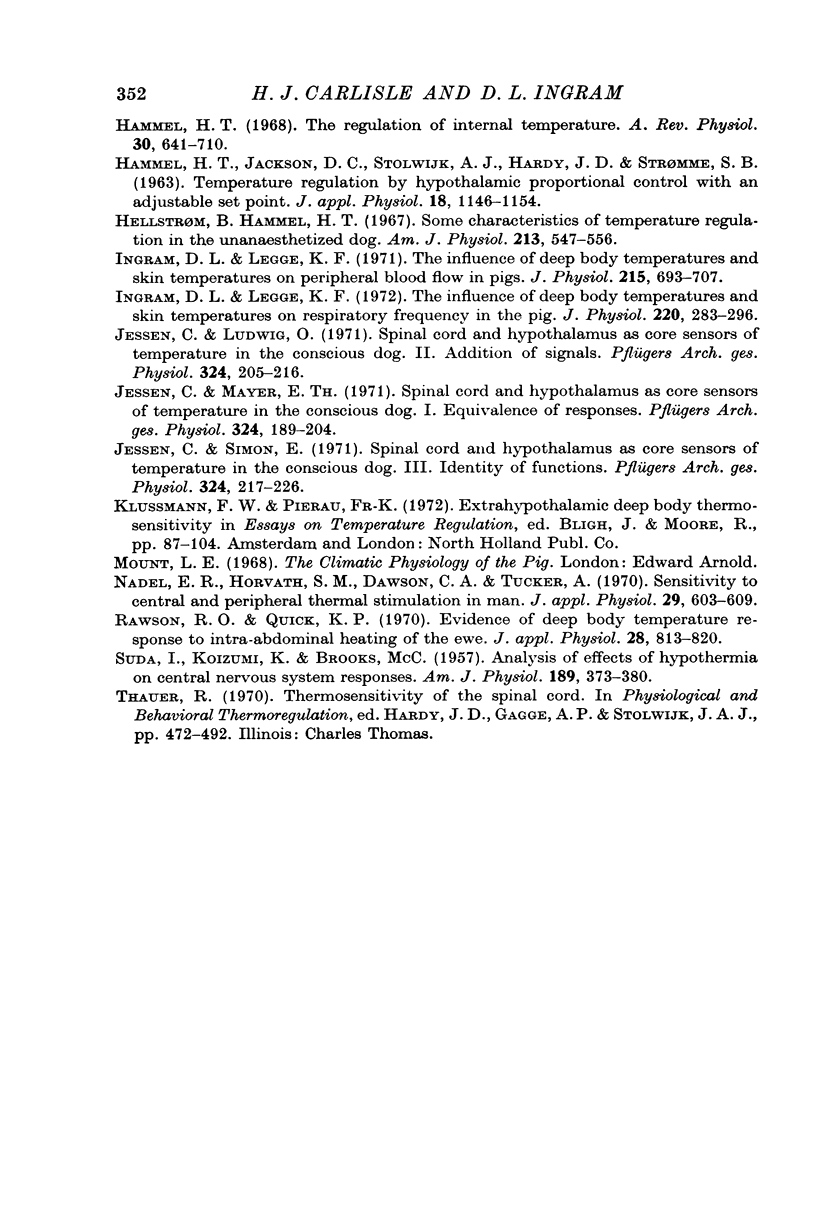
Selected References
These references are in PubMed. This may not be the complete list of references from this article.
- Baldwin B. A., Ingram D. L. Effect of heating & cooling the hypothalamus on behavioral thermoregulation in the pig. J Physiol. 1967 Jul;191(2):375–392. doi: 10.1113/jphysiol.1967.sp008256. [DOI] [PMC free article] [PubMed] [Google Scholar]
- Baldwin B. A., Ingram D. L., LeBlanc J. The effects of environmental temperature and hypothalamic temperature on excretion of catecholamines in the urine of the pig. Brain Res. 1969 Dec;16(2):511–515. doi: 10.1016/0006-8993(69)90243-1. [DOI] [PubMed] [Google Scholar]
- Baldwin B. A., Ingram D. L. The influence of hypothalamic temperature and ambient temperature on thermoregulatory mechanisms in the pig. J Physiol. 1968 Oct;198(3):517–529. doi: 10.1113/jphysiol.1968.sp008622. [DOI] [PMC free article] [PubMed] [Google Scholar]
- Carlisle H. J., Ingram D. L. The effects of heating and cooling the spinal cord and hypothalamus on thermoregulatory behaviour in the pig. J Physiol. 1973 Jun;231(2):353–364. doi: 10.1113/jphysiol.1973.sp010237. [DOI] [PMC free article] [PubMed] [Google Scholar]
- HAMMEL H. T., JACKSON D. C., STOLWIJK J. A., HARDY J. D., STROMME S. B. TEMPERATURE REGULATION BY HYPOTHALAMIC PROPORTIONAL CONTROL WITH AN ADJUSTABLE SET POINT. J Appl Physiol. 1963 Nov;18:1146–1154. doi: 10.1152/jappl.1963.18.6.1146. [DOI] [PubMed] [Google Scholar]
- Hammel H. T. Regulation of internal body temperature. Annu Rev Physiol. 1968;30:641–710. doi: 10.1146/annurev.ph.30.030168.003233. [DOI] [PubMed] [Google Scholar]
- Hellstrom B., Hammel H. T. Some characteristics of temperature regulation in the unanesthetized dog. Am J Physiol. 1967 Aug;213(2):547–556. doi: 10.1152/ajplegacy.1967.213.2.547. [DOI] [PubMed] [Google Scholar]
- Ingram D. L., Legge K. F. The influence of deep body temperatures and skin temperatures on peripheral blood flow in the pig. J Physiol. 1971 Jul;215(3):693–707. doi: 10.1113/jphysiol.1971.sp009492. [DOI] [PMC free article] [PubMed] [Google Scholar]
- Ingram D. L., Legge K. F. The influence of deep body temperatures and skin temperatures on respiratory frequency in the pig. J Physiol. 1972 Jan;220(2):283–296. doi: 10.1113/jphysiol.1972.sp009707. [DOI] [PMC free article] [PubMed] [Google Scholar]
- Jessen C., Ludwig O. Spinal cord and hypothalamus as core sensors of temperature in the conscious dog. II. Addition of signals. Pflugers Arch. 1971;324(3):205–216. doi: 10.1007/BF00586419. [DOI] [PubMed] [Google Scholar]
- Jessen C., Mayer E. T. Spinal cord and hypothalamus as core sensors of temperature in the conscious dog. I. Equivalence of responses. Pflugers Arch. 1971;324(3):189–204. doi: 10.1007/BF00586418. [DOI] [PubMed] [Google Scholar]
- Jessen C., Simon E. Spinal cord and hypothalamus as core sensors of temperature in the conscious dog. 3. Identity of functions. Pflugers Arch. 1971;324(3):217–226. doi: 10.1007/BF00586420. [DOI] [PubMed] [Google Scholar]
- Nadel E. R., Horvath S. M., Dawson C. A., Tucker A. Sensitivity to central and peripheral thermal stimulation in man. J Appl Physiol. 1970 Nov;29(5):603–609. doi: 10.1152/jappl.1970.29.5.603. [DOI] [PubMed] [Google Scholar]
- Rawson R. O., Quick K. P. Evidence of deep-body thermoreceptor response to intra-abdominal heating of the ewe. J Appl Physiol. 1970 Jun;28(6):813–820. doi: 10.1152/jappl.1970.28.6.813. [DOI] [PubMed] [Google Scholar]
- SUDA I., KOIZUMI K., BROOKS C. M. Analysis of effects of hypothermia on central nervous system responses. Am J Physiol. 1957 May;189(2):373–380. doi: 10.1152/ajplegacy.1957.189.2.373. [DOI] [PubMed] [Google Scholar]


